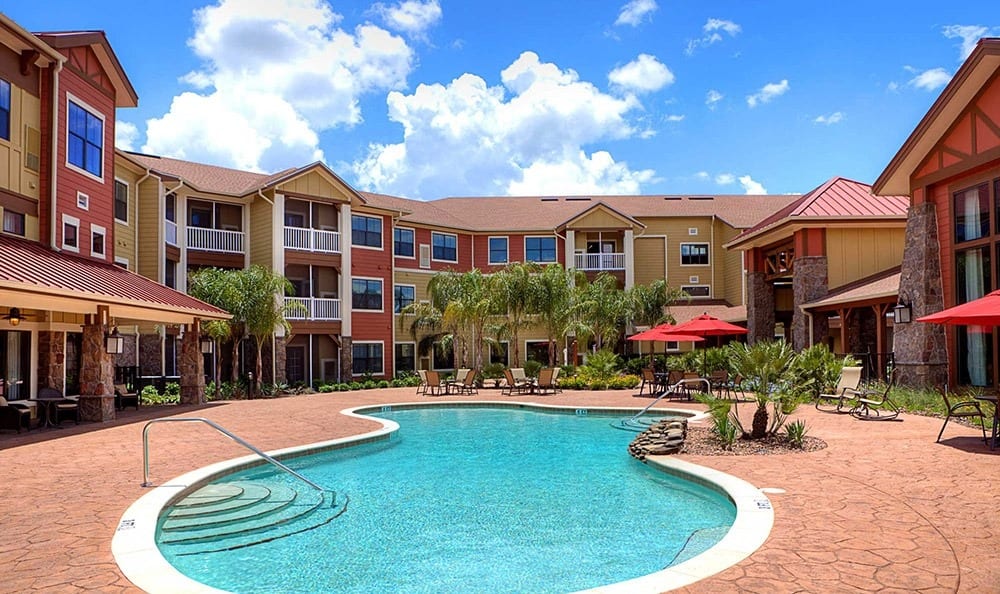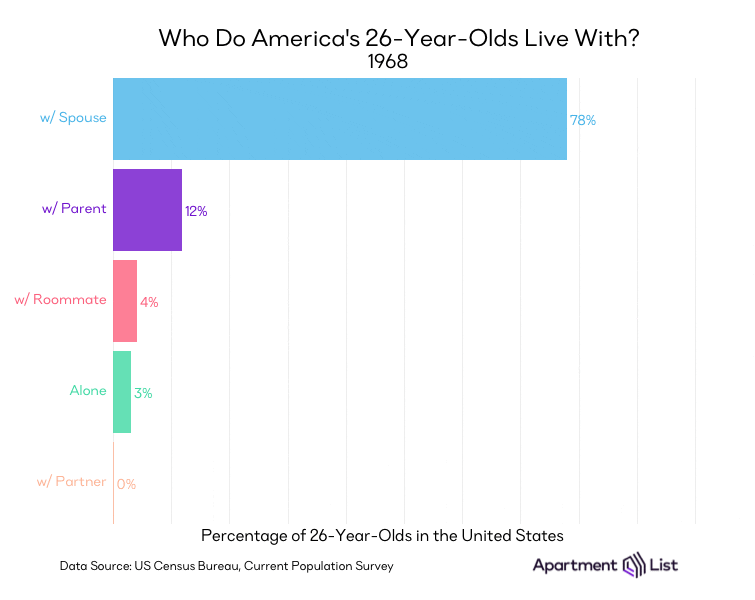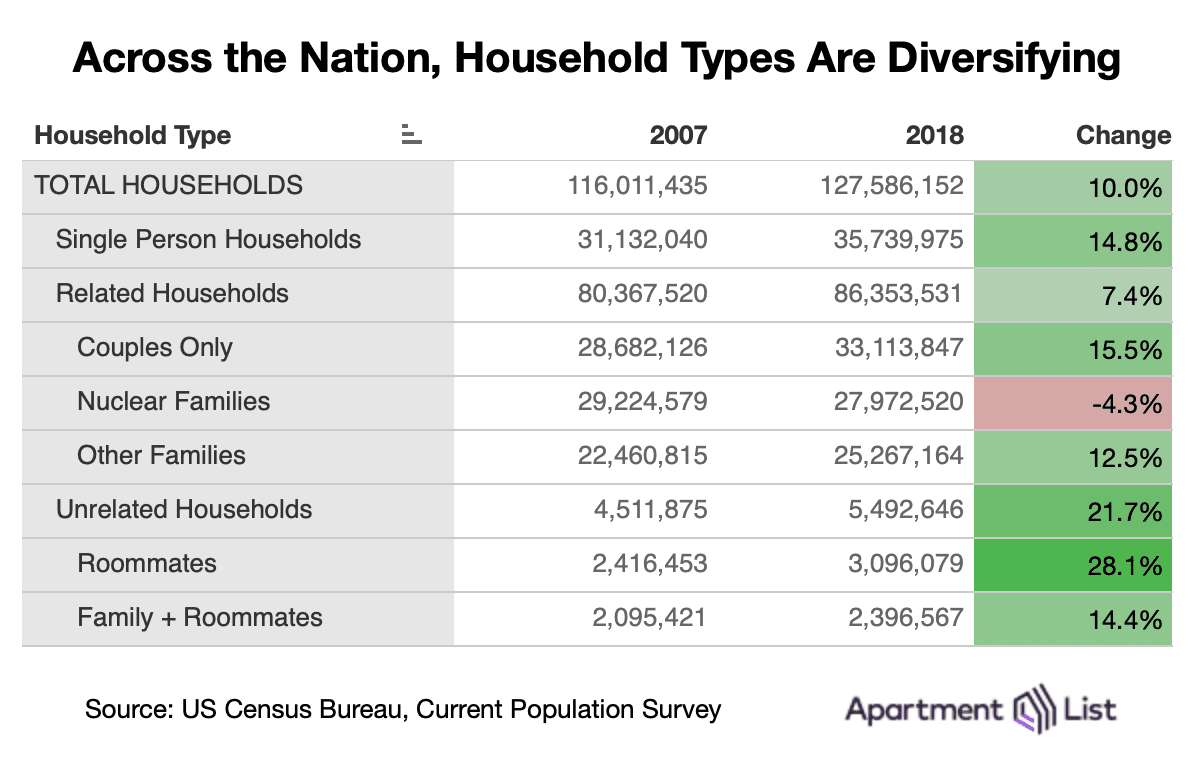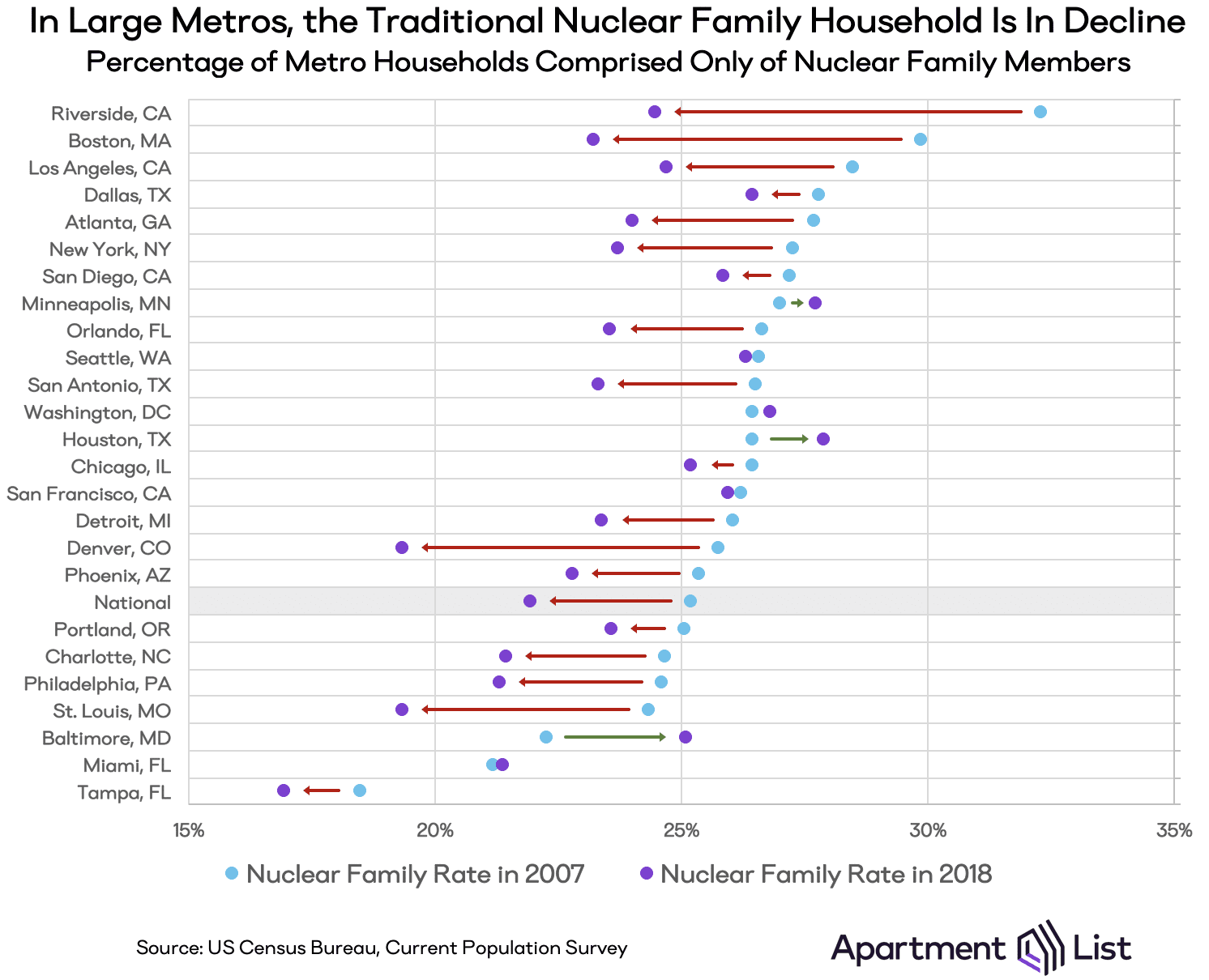
Olyvia Ruhlmann, Apartment List
The Average American Household
According to a new study by Apartment List, the way in which American’s organize themselves into households is rapidly changing. Fifty years ago, 76% of young adults were married and lived with their spouse. Today only 24% of 26-year olds live with their spouse. In fact, Americans in their 20’s are more likely to live with a parent than a spouse. Other household choices, such as living with roommates, living alone, or living with an unmarried partner, are also on the rise.

Millennials today live in a much more varied range of household types than young adults of previous generations. Economic factors and changing social norms are encouraging many Americans to band together and share their home with non-family members to secure their preferred housing (“unrelated households”), particularly among individuals with lower incomes. It is also becoming much more common for multiple family units to live together under one roof. In some metros, these “unrelated” households have more than doubled since the start of the Great Recession in 2007.

Average American Household; A New trend is emerging?
Similarly, with younger people starting families later in life and rising costs of housing, the nuclear family household (households in which residents identify as either a parent or child), is slowly disappearing. In 2018, the number of nuclear family households was the same as in 1984, when the United States population was 27% smaller. Nuclear families are becoming more expensive to maintain, and we see them declining in 20 of the nation’s 25 largest metropolitan areas.

If current cultural and economic trends continue, the researchers at Apartment List predict so will these changes in household composition. Housing costs are rising quickly, especially in booming job markets and for lower-income individuals. As more people search for roommates or choose to live alone, a wave of co-living companies is betting on shared living spaces. Growth in the popularity and policy relevance of accessory dwelling units (ADUs) mirrors the rise in large related or unrelated households. Homebuyers are starting to seek out homes that provide home-sharing opportunities.
As rent costs continue to rise, roommates and co-living arrangements will become even more appealing and Apartment List expects to see households grow or merge to afford housing. Families will increasingly welcome relatives (and strangers) into their households. In turn, as certain household arrangements become more common, the stigmas around them will likely dissipate and re-shape what our housing looks and feels like.
Say, what’s the problem with moving back in with mom and dad well into adulthood if your entire friend group already has? If there is increasingly no such thing as a typical household, Americans soon won’t recall what a ‘typical household’ is either.
Other Articles of Interest
Current Stock Market Trends: Embrace Strong Deviations (Oct 2)
Market Insights: October Stock Market Crash Update (Oct 1)
BTC Update: Will Bitcoin Continue Trending Higher (Sept 17)
Stock Market Forecast For Next 3 months: Up Or Down? (Sept 16)
Stock Market Crash Date: If Only The Experts Knew When (Aug 26)
Nickel Has Put In A long Term Bottom; What’s Next? (July 31)
AMD vs Intel: Who Will Dominate the Landscape going forward (June 28)
Fiat Currency: Instruments of Mass Destruction (June 18)
The Retirement Lie The Masses Have Been Conned Into Accepting (June 15)
Stock Market Bull 2019 & Forever QE (June 13)
Forever QE; the Program that never stops giving (May 31)
Trending Now News Equates To Garbage; It’s All Talk & No Action (April 24)
Americans Are Scared Of Investing And The Answer Might Surprise You (March 9)


